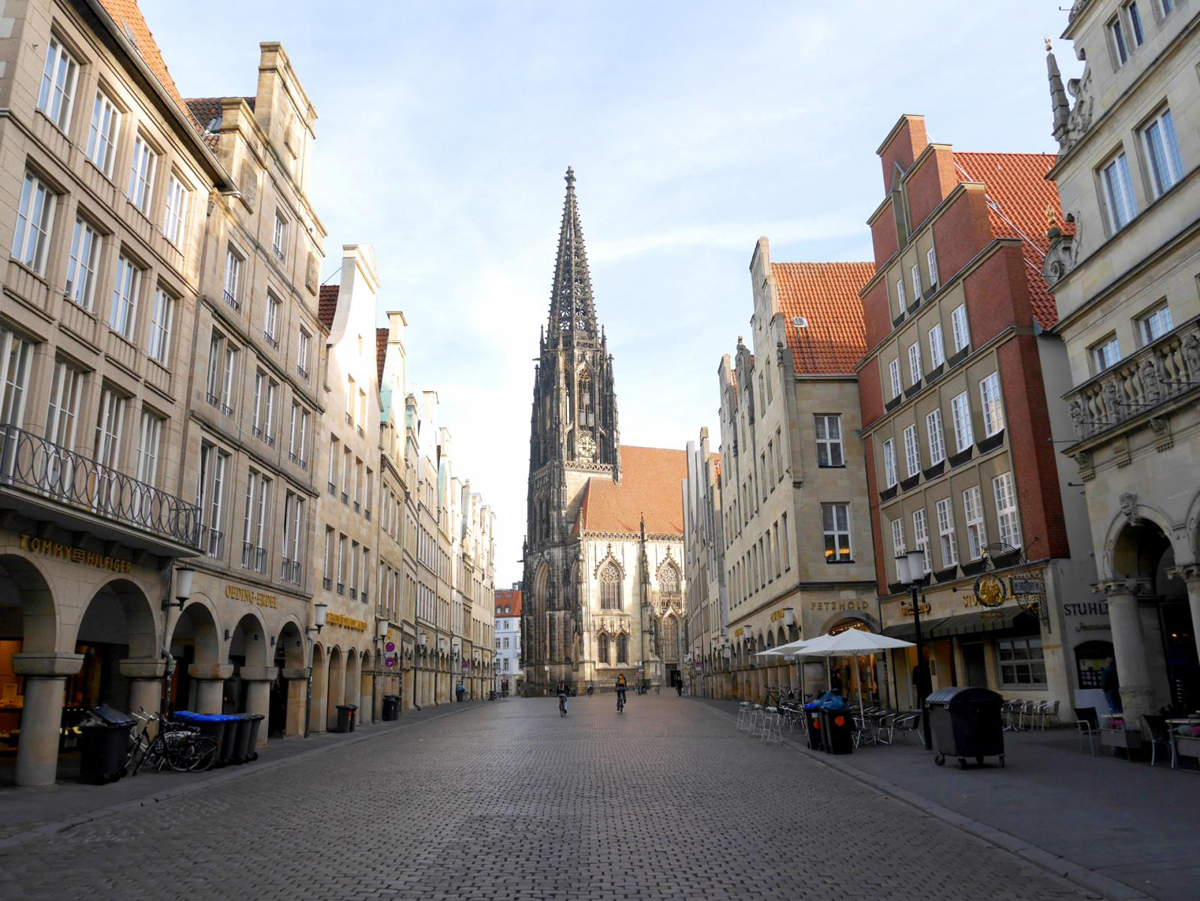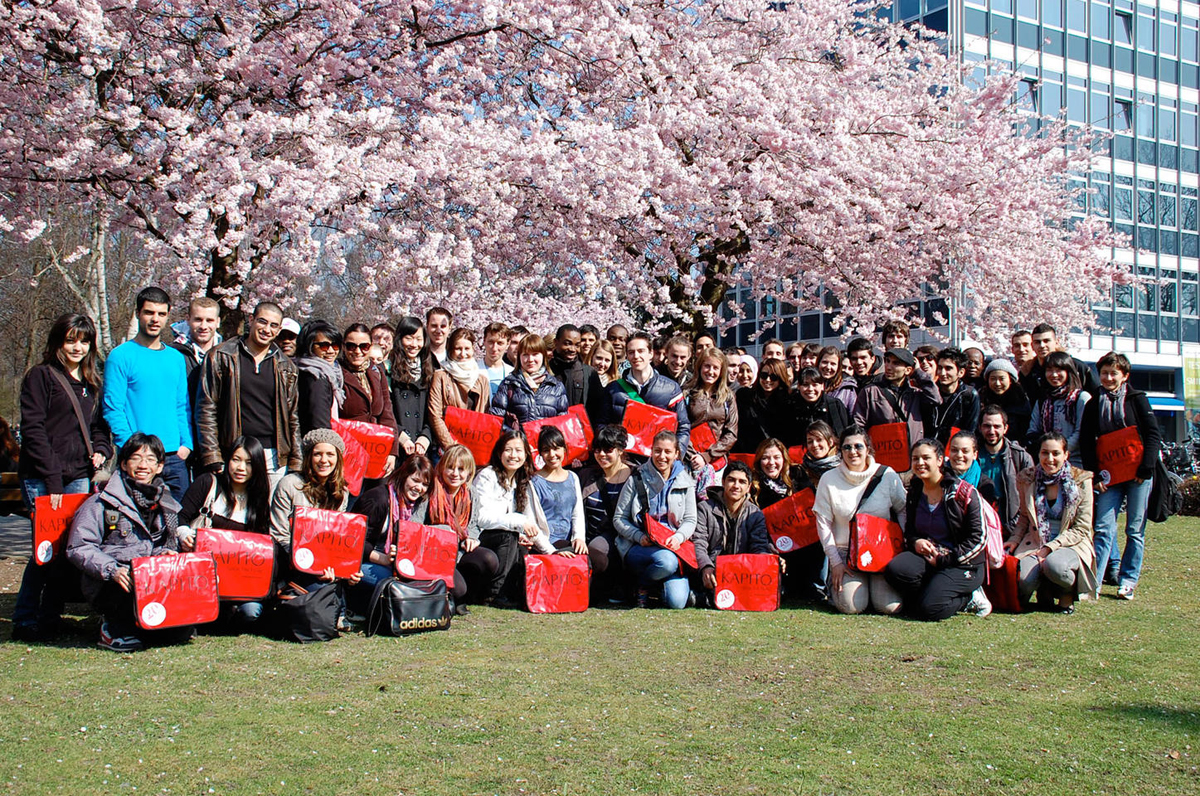
German Courses in Münster
Overview
Münster is located in North Rhine-Westphalia, not far from Germany’s border with the Netherlands. It is a young city of science and learning and it is the capital city of bicycles. It is an outstanding place to live, work and learn. In this city, urban culture, municipal diversity and first-class rural recreation intersect and have a mutually enhancing effect.
Why Study German in Münster?
There are many good reasons to this language in Münster. The internationally renowned universities and the strong economy, historical city and attractive nightlife all exercise a strong appeal on overseas students. Because Münster has so many of its own students, there is a broad range of cultural activities targeted at a younger audience. They often meet at one of the many student pubs in the city, such as the “Cavete” on Kreuzstrasse which offers food and drinks inexpensively.
Munster is also located in a region of Germany in which the “High German” is spoken. It is generally accent-free and dialect-free, making it the perfect place for language students to understand it easily, and to learn to speak it.
Language Schools and Camps in this Destination
Images of Münster, Germany
Things to Do and See During a Vacation Study
Prinzipalmarkt
This Prinzipalmarkt long pedestrian area with quaintly gabled buildings. Visitors can choose among the almost unlimited categories of products sold in one-of-a-kind boutiques or sit outdoors to soak up the sunshine with a coffee or one of the well-known local beers.
The Rathaus (Town Hall)
The Rathaus is located on the Prinzipalmarkt, where European nobility met to sign the Peace of Westphalia, ending the infamous 30 Year War. Fought mainly in what is now Germany, this was the longest conflict of the modern era and, in the end, involved almost every power in Europe.
Pablo Picasso Museum
This small and interesting museum that contains some important works by Picasso.
Wochenmarkt Münster (Weekly Market)
This takes place on the Domplatz and is one of the best markets in Germany. Fresh fruits and vegetables of all kinds, including Dutch licorice, are all available to taste before buying them.
Münster Cathedral (Dome of St. Paul)
Located on the highest hill in Münster and right next to the Prinzipalmarkt, this Cathedral was originally built in the 8th century and rebuilt after a fire in the 13th century. Visitors can visit the astronomical clock and organ inside the church, renovated in 2012.
St. Lamberti’s Church
Located on the north end of the Prinzipalmarkt, the church is famous for the three iron cages that can still be seen hanging from part of the steeple. These iron cages once contained the tortured and executed bodies of the leaders of the Anabaptist Rebellion of 1533-34.
Stadtmuseum (City Museum)
This museum contains a detailed description of the history of Münster and the region, along with reproductions, great old photos, and archeological samples.
Black Box and Münster’s music scene
This performance venue and culture centre sees a huge range of acts in any given week. Classical music mixes with jazz and house; well-known DJs often experiment. There are also a number of bars and clubs at the former harbor. Students can attend live concerts and parties with pop and rock music at the Jovel on Albersloher Weg.
Erbdrostenhof
This is a lavish private mansion, built in 1757 by architect Johann Conrad Schlaun. He was a master of the Westphalian baroque, a more subdued, less exuberant expression of the style than in southern Germany.
LWL-Museum für Naturkunde
Dinosaurs and the universe are the stars at this large state-run nature museum, which also has a popular planetarium.
LWL-Museum für Kunst und Kultur
Opened in 1908 as the Westfälisches Landesmuseum, this museum has 51 rooms where visitors can find many of the sculptures purged from the churches by the Anabaptists. The collection spans from the Middle Ages to the latest avant-garde creations. Works by contemporary painters Conrad von Soest, August Macke, Simon Hantaï and others are on display here. Münster is also the perfect place for art lovers; the city is proud of its “skulptur projekte münster,” an exhibition that takes place every ten years and always leaves lasting memories.
Schloss
The 1773 Schloss is the former residence of the prince-bishops, and now the main university building.
Burg Vischering
Located 30 km southwest of Münster, Burg Vischering is the quintessential medieval moated castle and Westphalia’s oldest (1271). The complex consists of an outer castle and the main castle, which is now a museum.
Kruse-Baimken
Huge trees soar over this lovely beer garden right off the promenade and near the Aasee, a beautiful lake located at walking distance of downtown Münster. The food at the Kruse-Baimken is better than what is typically found in a beer garden—the sausages are smokier and the salads are fresher.
How to Arrive at your Language Course
By Plane
International Airport Münster-Osnabrück (FMO)
Offers both domestic flights and European connections, otherwise students can arrive in Dortmund, Düsseldorf and Frankfurt. Connections between Münster and these airports are available by train and by bus.
More travel information is available here.
By Train
Münster is linked with Germany’s and Europe’s major cities s via its IC, EC, and ICE connections.
More travel information about rail travel is available here.

